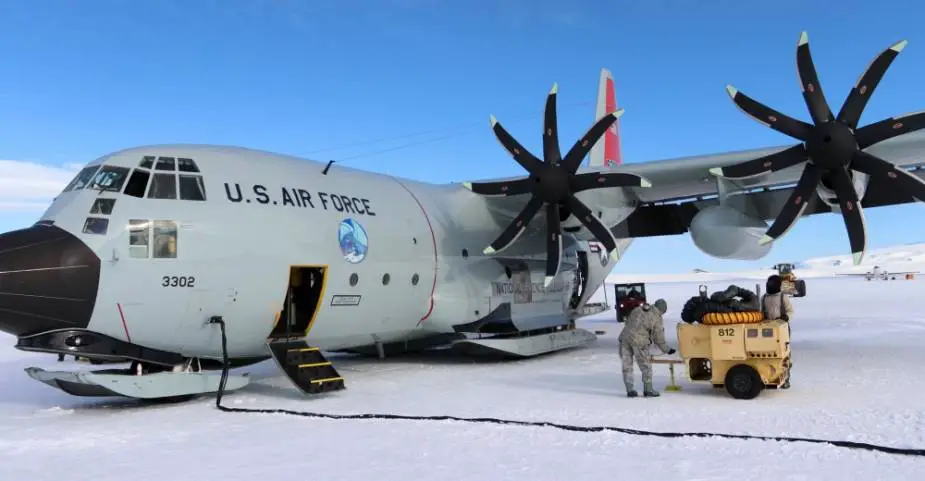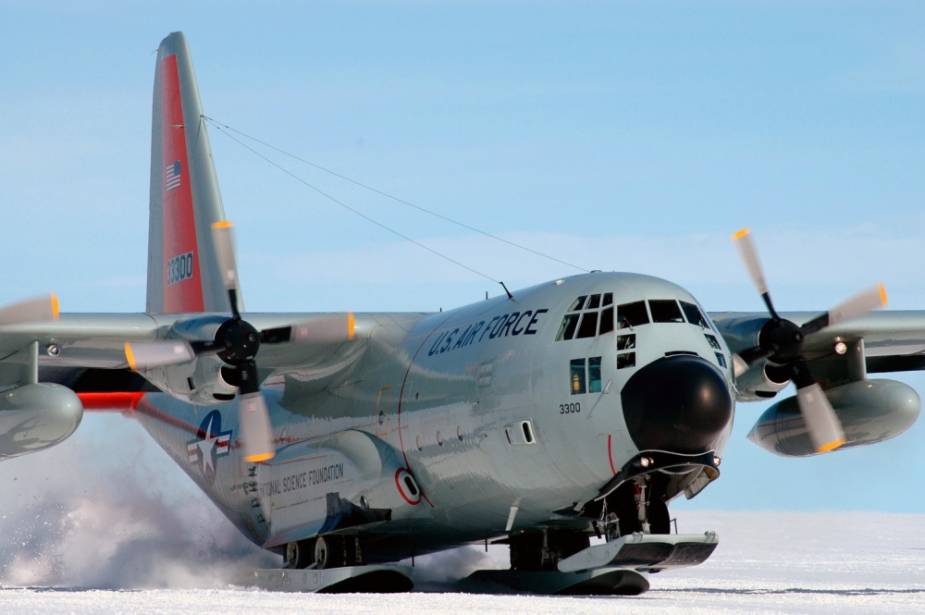Breaking news
US 109th Airlift Wing deploys LC-130 Super Hercules to New Zealand for emergency missions to Antarctica.
Airmen and Aircraft from the New York Air National Guard's 109th Airlift Wing will not be flying to Antarctica this year to provide logistics support to the National Science Foundation's U.S. Antarctic Program. The change in mission is being made because of the COVID-19 pandemic.
Follow Air Recognition on Google News at this link

A member of the New York Air National Guard's 109th Airlift Wing performs maintenance on an LC-130J Super Hercules, ski equipped aircraft at McMurdo Station, Antarctica on December 17, 2018 (Picture source: U.S. Air National Guard/Tech Sgt. Gabriel Enders)
For the last 32 years the 109th Airlift Wing, based at Stratton Air National Guard Base in Scotia, New York has supported National Science Foundation research in Antarctica by flying people, supplies and equipment around the continent. The mission was part of Operation Deep Freeze, the Department of Defense's annual support to U.S. Antarctic operations.
Instead, this year, the wing will deploy three LC-130s and three aircrews and a maintenance team, a total of 31 airmen, to Christchurch, New Zealand where they will be on standby for contingency missions that require flying to Antarctica. The three Super Hercules will leave Sciotia on Monday, November 23.
The National Science Foundation is minimizing the number of people who set foot on the continent during the 2020-21 season as part of a commitment by the United States and other nations to prevent the introduction of the COVID-19 virus to Antarctica. The footprint of activity will be "reasonably reduced," according to the National Science Foundation.
Traditionally the 109th Airlift Wing has flown 6 to 7 LC-130 ski-equipped aircraft and around 250 personnel to McMurdo Station, the National Science Foundation facility on the continent which serves as the hub for U.S. research activities. McMurdo Station is 2,415 miles away from New Zealand, roughly five hours of flying time.
"Despite the complications of operating during the Covid-19 Pandemic, the 109th Airlift Wing will continue its support of the National Science Foundation," said Col. Cristian Sander, the wing's vice commander. "Personnel and aircraft will operate during the timeframe when only ski-equipped aircraft may operate within Antarctica; while adhering to all international and Center for Disease Control guidelines." Sander will be in command of the deployed aircraft and personnel.
The 109th Airlift Wing flies the largest aircraft in the world which are equipped to land on ice and snow. This ability makes the 109th Airlift Wing an indispensable partner to the National Science Foundation in the Arctic and Antarctic activities. During the 2019-20 season, crews completed more than 150 missions within Antarctica by flying 2,100 researchers and support staff, 2.8 million pounds of cargo and 1.8 million pounds of fuel to research stations across the continent. The 109th Airlift Wing has been supporting the National Science Foundation's Antarctic research since 1988. Since 1999, the unit has been the provider sole of polar airlift to the National Science Foundation and U.S. Antarctic research efforts.

An LC-130 Hercules from the New York Air National Guard's 109th Airlift Wing takes off on the Greenland ice cap duirng a mission in September 2008. The 109th AW is the only organization in the U.S. military that flies the ski-equipped LC-130 aircraft (Picture source: U.S. Air Force)


























